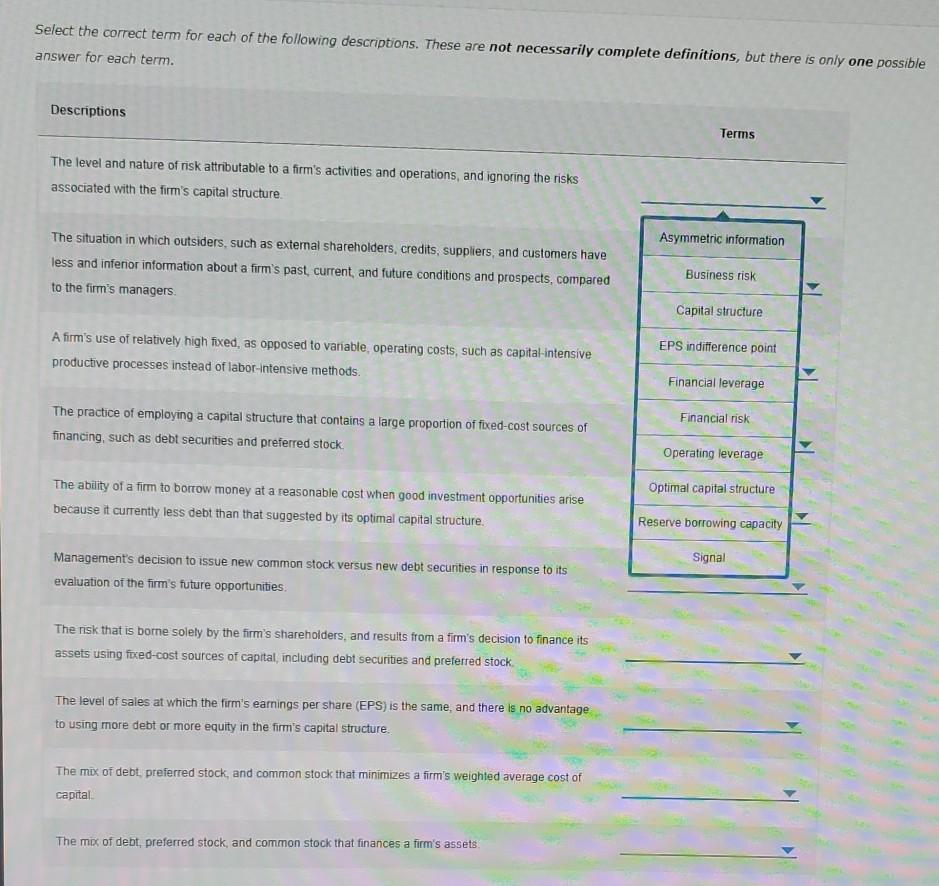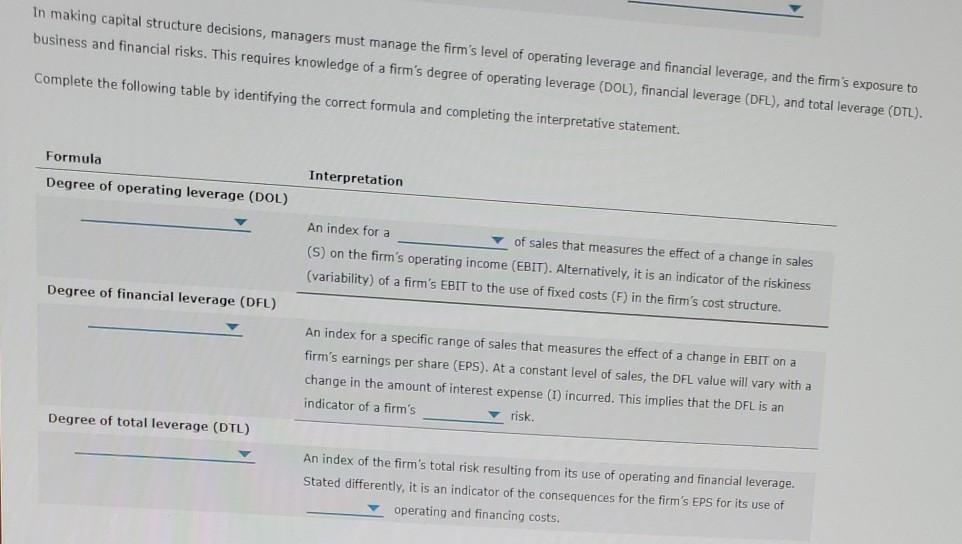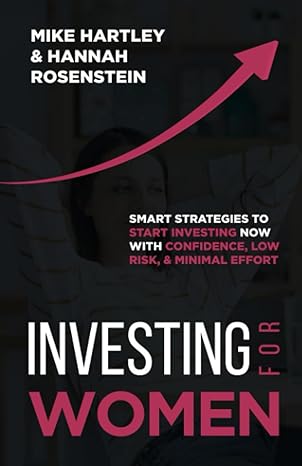Answered step by step
Verified Expert Solution
Question
1 Approved Answer
Select the correct term for each of the following descriptions. These are not necessarily complete definitions, but there is only one possible answer for each


Select the correct term for each of the following descriptions. These are not necessarily complete definitions, but there is only one possible answer for each term. Descriptions Terms The level and nature of risk attributable to a firm's activities and operations, and ignoring the risks associated with the firm's capital structure Asymmetric information The situation in which outsiders, such as external shareholders, credits, suppliers and customers have less and infenor information about a firm's past current and future conditions and prospects, compared Business risk to the firm's managers Capital structure A firm's use of relatively high fixed, as opposed to vanable, operating costs, such as capital-intensive productive processes instead of labor-intensive methods. EPS indifference point Financial leverage The practice of employing a capital structure that contains a large proportion of fixed-cost sources of financing, such as debt securities and preferred stock Financial risk Operating leverage Optimal capital structure The ability of a firm to borrow money at a reasonable cost when good investment opportunities arise because it currently less debt than that suggested by its optimal capital structure. Reserve borrowing capacity Signal Management's decision to issue new common stock versus new debt securities in response to its evaluation of the firm's future opportunities The risk that is borne solely by the firm's shareholders, and results from a firm's decision to finance its assets using fixed-cost sources of capital, including debt securities and preferred stock. The level of sales at which the firm's earnings per share (EPS) is the same, and there is no advantage to using more debt or more equity in the firm's capital structure. The mix of debt preferred stock, and common stock that minimizes a firm's weighted average cost of capital The mix of debt, preferred stock, and common stock that finances a firm's assets. In making capital structure decisions, managers must manage the firm's level of operating leverage and financial leverage, and the firm's exposure to business and financial risks. This requires knowledge of a firm's degree of operating leverage (DOL), financial leverage (DFL), and total leverage (OTL). Complete the following table by identifying the correct formula and completing the interpretative statement. Formula Degree of operating leverage (DOL) Interpretation An index for a of sales that measures the effect of a change in sales (S) on the firm's operating income (EBIT). Alternatively, it is an indicator of the riskiness (variability) of a firm's EBIT to the use of fixed costs (F) in the firm's cost structure. Degree of financial leverage (DFL) An index for a specific range of sales that measures the effect of a change in EBIT on a firm's earnings per share (EPS). At a constant level of sales, the DFL value will vary with a change in the amount of interest expense (I) incurred. This implies that the DFL is an indicator of a firm's risk. Degree of total leverage (DTL) An index of the firm's total risk resulting from its use of operating and financial leverage. Stated differently, it is an indicator of the consequences for the firm's EPS for its use of operating and financing costs
Step by Step Solution
There are 3 Steps involved in it
Step: 1

Get Instant Access to Expert-Tailored Solutions
See step-by-step solutions with expert insights and AI powered tools for academic success
Step: 2

Step: 3

Ace Your Homework with AI
Get the answers you need in no time with our AI-driven, step-by-step assistance
Get Started


